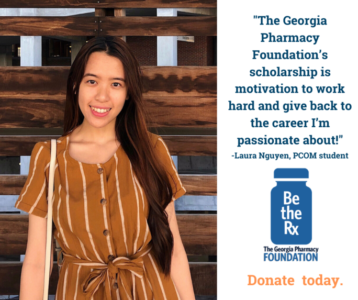When pigs die, support llamas, WHO’s plan for insulin, and more
15 Nov 2019
Posted by Andrew Kantor
Dawgs getting bigger
Congratulations to GPhA members Michael Azzolin (of PharmD on Demand), Kevin Florence (of ADD Personal Care Pharmacy) and Ben Ross (of Forest Height’s Pharmacy) for making this year’s Bulldog 100 Club — “the 100 fastest-growing businesses owned or operated by UGA alumni.” Keep on’ growing!
37
Georgia pharmacists, on average, earn $118,710 a year — that ranks #37 out of 51 (the 50 states plus DC). So sayeth the latest Occupational Outlook Handbook.
But don’t feel like you have to rush to move to Alaska or California, where salaries are highest. The overall range isn’t huge: It only goes from $112,290 in Montana* to those with (we assume) their own personal foot masseuses in Alaska ($139,880) or California ($139,690). The data don’t take into account the cost of living in each state, either.
* North Dakota is an outlier, with pharmacists there eking out a living at $103,250
Meet Laura
Laura Nguyen discovered her passion for pharmacy at a young age when she cared for her diabetic grandmother. The help she received from her grandmother’s pharmacist decoding all that medication inspired Laura to become a pharmacist herself.
Being the 2019 recipient of the Georgia Pharmacy Foundation’s Regina Baird Scholarship is a strong motivator to keep working hard, she said — and to give back to the profession she’s become so passionate about.
She has a couple of years before she graduates, but Laura is already volunteering to help others: She’s president-elect for the American Pharmacists Association – Academy of Student Pharmacists and a PCOM representative on GPhA’s Student Leadership Board.
Read more about Laura here. And help other student pharmacists manage their debt with your tax-deductible donation to the Georgia Pharmacy Foundation.
Thank you!
Thanks to everyone who has already contributed to the foundation’s Annual Giving Campaign. We’ve raised $4,500 toward our $10,000 goal! Help us hit our target — donate today!
Phages to the rescue
An American dies from an antibiotic-resistant infection every 15 minutes. And it’s getting worse. Possibly the best potential weapons are bacteriophages: viruses that each target an individual bacteria. Identify the pathogen, then find the phage that kills it.
A University of Florida team was able to treat E. coli infections — you know, like in the current outbreak from contaminated beef — by finding the ‘matching’ phage.
The US-based team was able to show that using their Escherichia coli/Salmonella spp./Listeria monocytogenes-targeting bacteriophage cocktail, which they named “Foodborne Outbreak Pill” (FOP), they were able to achieve a similar therapeutic effect as that of ampicillin therapy (antibiotic therapy).
And a team from King’s College London and UC San Diego have found that phages can attack and treat alcoholic liver disease by killing the hepatitis bacterium (E. faecalis) that causes it.
WHO to make insulin affordable
Insulin prices are sky-high because the three companies that make most of it can charge what they want. So, taking a page from its HIV-eradication playbook, the World Health Organization is going to start testing and approving generic versions of insulin so more affordable options are available for people around the world.
Unfortunately, that probably won’t do much to help the millions of Americans who have trouble affording it.
But the health agency’s move is unlikely to immediately affect the sky-high price of the hormone in the United States. The American market is regulated by the F.D.A., and merely applying for approval is prohibitively expensive for many small companies.
And — unlike some poorer countries — the FDA is unlikely to accept WHO approval in lieu of its own testing.
Some pigs
Having a quarter of the world’s pigs wiped out by swine flu means more than a longer wait for the next McRib appearance. It also means the world’s supply of heparin is at risk.
“Charismatic megafauna”
Idea for a new revenue stream: Why not rent out therapy llamas*?
Llama owners will tell you that their pets have a sixth sense about people who are needy, ill or frail. Carol Rutledge says that her therapy llama, whose name is Knock, will walk voluntarily to the bedside of a hospice patient and stand in silence while the patient reaches for him. “It wrenches at your heart,” she said.
* Alpacas are cuter, but not nearly as sociable. Trust me.
The Long Read:
“‘I live on the street now’: how Americans fall into medical bankruptcy”
- 1 in 6 Americans has an unpaid medical bill on their credit report
- 1 in 12 Americans has no health insurance
- 530,000 Americans file for bankruptcy each year because of medical bills
In Savannah, Georgia, a 35-year-old man who requested to remain anonymous to avoid being associated with a bankruptcy, recently found himself homeless and jobless due to prolonged hospital stays and hundreds of thousands of dollars in medical debt.
[…]
“I have amassed over $400,000 in medical bills I need to pay, and still have at least six months before I get a disability hearing. So I owe over $400,000 in medical bills, have lost my house and I live on the street now, with no end in sight,” he said.




